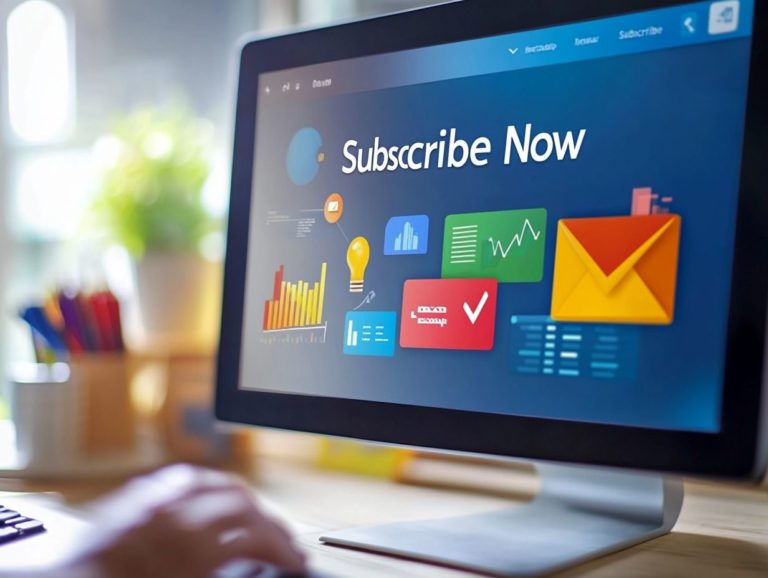5 Common Email Marketing Mistakes to Avoid
Let's Set Up Your Lead Generation Strategy
Fill out the form below, and our team will get in touch with you to create a tailored solution for your business.
Email marketing can serve as a formidable asset for businesses aiming to forge connections with their audience. However, it’s all too easy to fall into traps that can undermine your efforts.
This article delves into five prevalent email marketing mistakes, ranging from vague objectives to the oversight of personalization.
By recognizing these pitfalls and learning how to sidestep them, you ll be well-prepared to enhance your campaigns and achieve remarkable outcomes.
Prepare to elevate your email strategy and engage your subscribers with finesse!
Contents
- Key Takeaways:
- 1. Not Having a Clear Goal for the Email Campaign
- 2. Not Segmenting Your Email List
- 3. Sending Too Many Emails
- Let's Set Up Your Lead Generation Strategy
- 4. Not Personalizing the Emails
- 5. Not Testing and Tracking Email Performance
- What Are the Benefits of Email Marketing?
- Let's Set Up Your Lead Generation Strategy
- Let's Set Up Your Lead Generation Strategy
- Let's Set Up Your Lead Generation Strategy
- Frequently Asked Questions
- What are the top 5 common email marketing mistakes to avoid?
- How does sending too many emails affect my email marketing strategy?
- Why is segmenting my audience important for successful email marketing?
- What are the benefits of personalizing emails?
- How important is it to optimize emails for mobile devices?
- Why is tracking and analyzing data essential for email marketing success?
Key Takeaways:
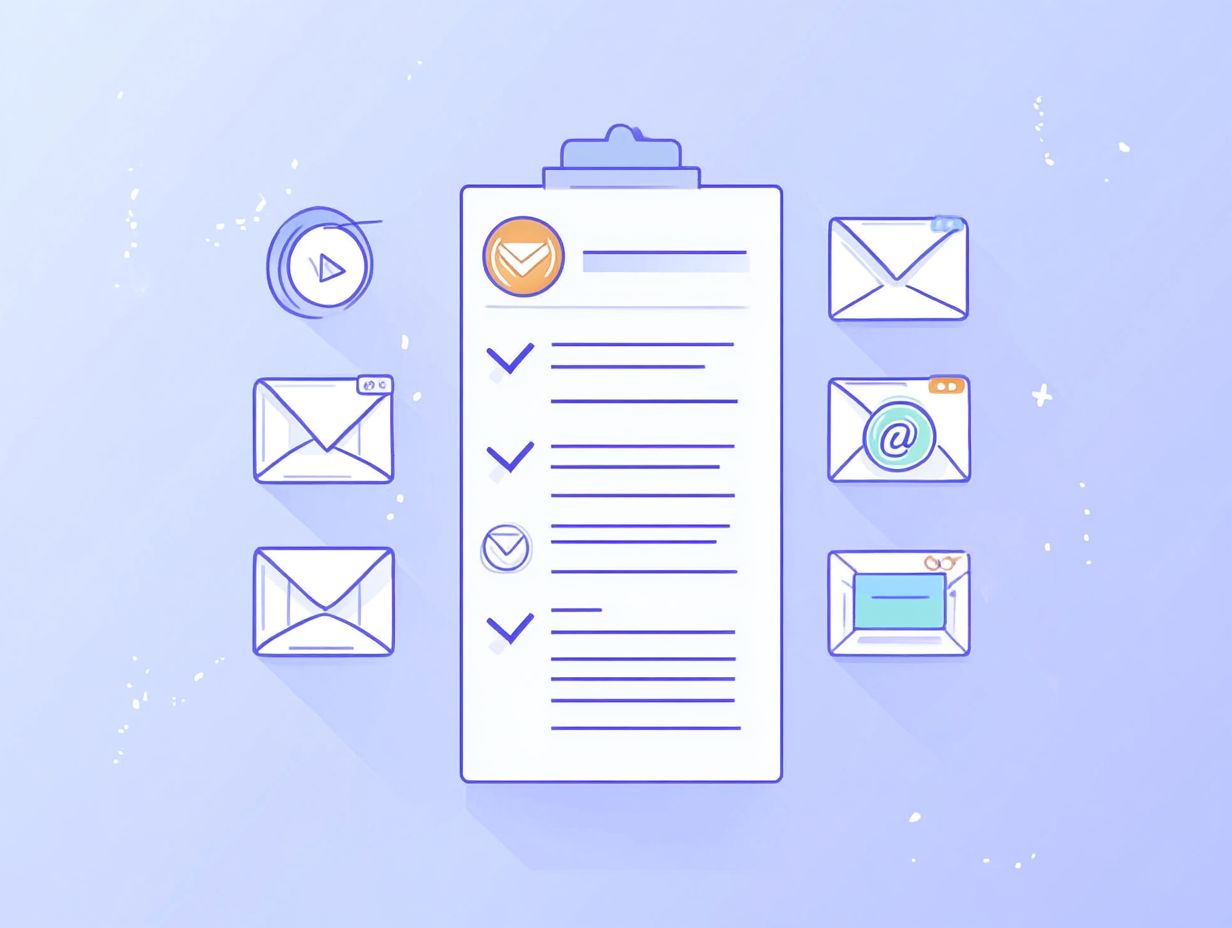
- Setting clear goals for email campaigns can improve their effectiveness and drive desired actions from subscribers.
- Segmenting email lists based on demographics, interests, and behavior can increase engagement and conversion rates.
- Sending too many emails can lead to subscriber fatigue and unsubscribes, so it’s important to find the right frequency for your audience.
1. Not Having a Clear Goal for the Email Campaign
Not having a clear goal for your email marketing campaign can significantly undermine its effectiveness, resulting in lost opportunities for engagement and customer loyalty. This can ultimately impact your broader overall marketing plan and outcomes.
Setting measurable goals is crucial for crafting impactful email campaigns that resonate with your audience. For example, aim for specific engagement rates, such as increasing open rates by 20% or boosting click-through rates by 15%.
Clear objectives act like a roadmap, guiding your content creation to align with the interests and preferences of your audience. Consider comparing two options to see which one works better for subject lines or personalizing content based on customer behavior. These strategies can lead to improved segmentation and more targeted messaging.
By tracking metrics against these goals, you can evaluate the success of your campaigns in real time and make data-driven adjustments. This ultimately enhances overall performance.
2. Not Segmenting Your Email List
Neglecting audience segmentation in your email marketing can result in irrelevant promotional messages. This erodes customer loyalty and engagement, ultimately undermining the effectiveness of your digital marketing strategies.
To truly connect with potential customers, it’s crucial to explore various audience segmentation methods. This involves analyzing demographics, such as age and location, alongside behavioral data like shopping habits and engagement levels. By tapping into interests, you can craft content that resonates more deeply with your audience, boosting engagement rates.
Personalized subject lines and targeted content can yield better results, transforming how recipients view their email interactions. This approach builds exciting, lasting relationships and ultimately leads to higher conversion rates!
3. Sending Too Many Emails
Sending too many emails can overwhelm your subscribers, leading to increased unsubscribes and a negative perception of your brand. This imbalance can harm your email marketing efforts and diminish the effectiveness of your promotional messages.
To maintain this delicate balance, consider implementing email automation strategies that enable timely yet controlled communication. By segmenting your audience according to their preferences and behaviors, you can send automated emails that deliver personalized content without overwhelming recipients.
It s essential to avoid spammy language, as this impacts deliverability and can tarnish your sender reputation. By adopting a strategic approach that includes regular performance reviews and audience feedback, your marketing efforts can cultivate trust and engagement among subscribers while maximizing your return on investment.
Let's Set Up Your Lead Generation Strategy
Fill out the form below, and our team will get in touch with you to create a tailored solution for your business.
Don t miss out on the chance to boost your engagement rates! Start refining your email campaigns today to see impressive results!
4. Not Personalizing the Emails
Neglecting email personalization can lead to generic messages that simply don t resonate with your audience, diminishing the effectiveness of your email campaigns.
This can undermine your efforts to foster customer loyalty.
To truly engage your recipients, it s crucial to go beyond just inserting their names into the message. Instead, focus on crafting content that reflects their unique behaviors, interests, and past interactions to establish a more meaningful connection.
For example, suggesting products based on prior purchases or sending tailored content that aligns with their preferences can significantly boost engagement. Incorporating compelling calls to action (CTAs) that encourage users to act based on this personalized approach ensures they feel valued and understood.
You should also avoid overwhelming recipients with too many choices or neglecting effective audience segmentation, as these can dilute the impact of your message.
5. Not Testing and Tracking Email Performance
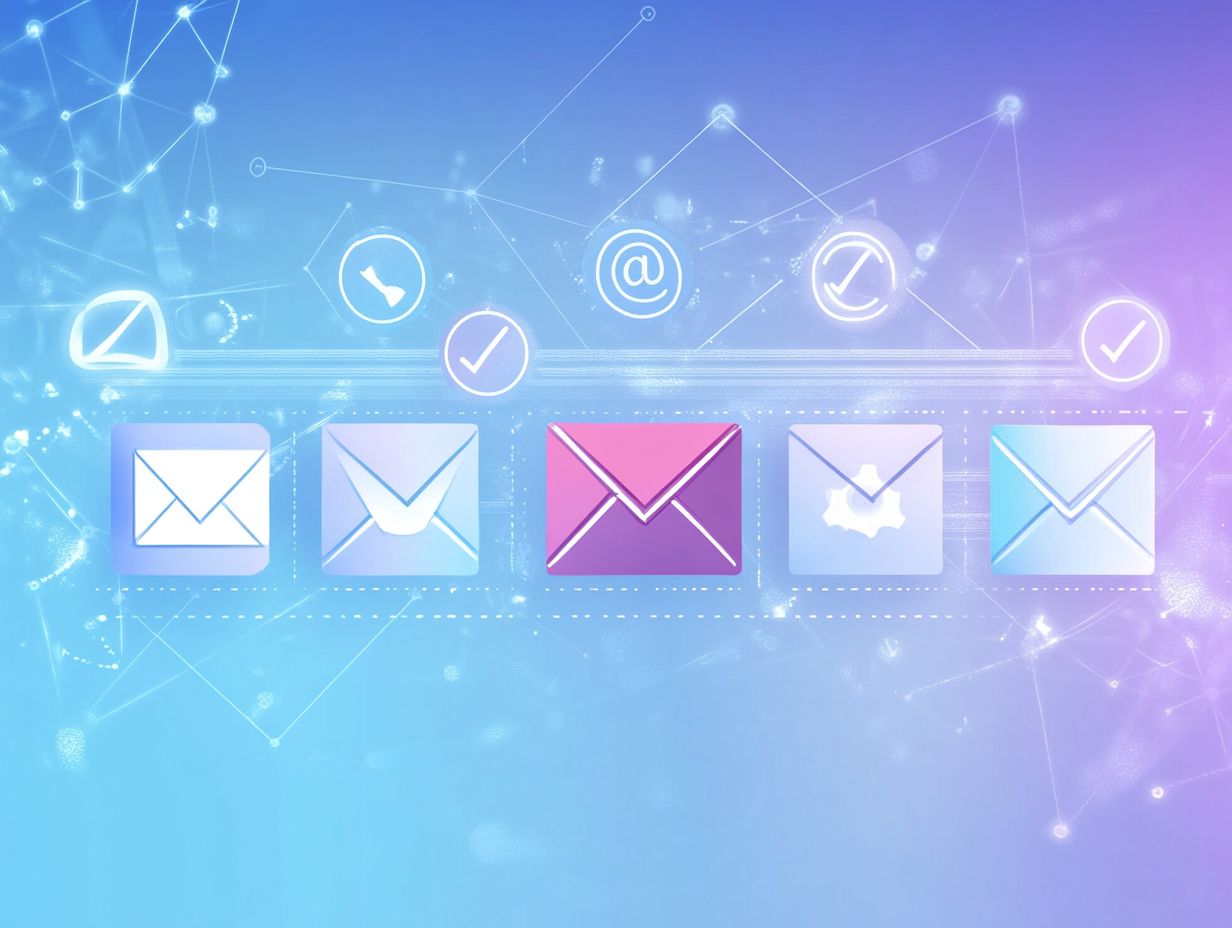
Neglecting to test and track your email performance can result in missed insights and lost opportunities for improvement, ultimately putting your email marketing strategy and engagement efforts at risk.
Without a well-structured approach to A/B testing (comparing two versions to see which performs better) of elements like subject lines and calls to action (CTAs), you might overlook essential enhancements that could significantly elevate your open rates and conversions.
By experimenting with various messaging and designs, you can discover what truly resonates with your audience.
Utilizing tools such as Google Analytics or specialized email marketing platforms enables you to meticulously track metrics like click-through rates and bounce rates.
This data offers valuable insights that can supercharge your future campaigns! Regularly analyzing these insights fosters a more engaged subscriber base, paving the way for long-term success.
What Are the Benefits of Email Marketing?
Email marketing presents a wealth of advantages, from fostering enhanced customer loyalty to driving high engagement, all while serving as a cost-effective tool for implementing your digital marketing strategies. It s an essential element of any robust marketing plan.
With its remarkable ability to deliver targeted messages straight to the inbox of potential customers, this strategy not only broadens your audience reach but also crafts a personalized experience that truly resonates with recipients.
Studies reveal that for every dollar you invest in email marketing, you can anticipate an impressive average return of $42, underscoring its outstanding return on investment (ROI).
Let's Set Up Your Lead Generation Strategy
Fill out the form below, and our team will get in touch with you to create a tailored solution for your business.
Equipped with advanced tracking tools, you can meticulously analyze open rates, click-through rates, and conversion metrics, enabling you to refine your strategies based on real-time data.
A compelling case study from the retail sector demonstrated that companies utilizing tailored email campaigns witnessed a staggering 760% increase in revenue, emphasizing the vital importance of harnessing this powerful marketing channel.
How Can Proper Goal-Setting Improve Email Marketing?
Proper goal-setting in your email marketing can transform your campaigns into precision-targeted endeavors that enhance customer loyalty and provide a clear framework for tracking effectiveness. This clarity is essential for maintaining engagement and achieving the outcomes you desire.
By defining specific objectives like boosting open rates by a certain percentage or expanding your subscriber list within a set timeframe you can tailor your content to resonate with your target demographics.
For example, a campaign aimed at millennials might incorporate vibrant visuals and mobile-friendly designs to capture their attention.
Marketing experts advocate for the SMART criteria specific, measurable, achievable, relevant, and time-bound to ensure your goals are not merely aspirational but entirely actionable.
This methodology gives you the power to evaluate your performance accurately and refine your strategies, ensuring each email you send is aligned with your overarching business objectives.
Don’t miss out! Start leveraging email marketing today to see incredible results.
What Are the Different Ways to Segment an Email List?
Effective audience segmentation requires you to categorize your email list based on who people are, how they act, and what they like. This strategy can significantly enhance your email personalization and foster customer loyalty.
By implementing demographic segmentation, you can tailor your messages to resonate with specific age groups, genders, or locations. This ensures that your content feels relevant to each recipient.
Behavioral targeting allows you to focus on the actions and interactions of your users, giving you the ability to create highly personalized campaigns based on past purchases or browsing habits.
Engagement level segmentation helps you distinguish between active users and those who may need a little extra encouragement, paving the way for targeted re-engagement strategies.
Each of these approaches boosts the effectiveness of your campaigns and enriches the overall customer experience, making your interactions feel more meaningful and connected.
How Often Should a Business Send Emails to Their Subscribers?
Determining the ideal frequency for sending emails to your subscribers is essential to keep them excited without inundating their inboxes. This balance can significantly influence the success of your email campaigns and engagement initiatives.
Finding that sweet spot between delivering informative content and maintaining the right frequency can be quite the challenge. You might wrestle with the decision of sending out weekly newsletters brimming with valuable insights or opting for monthly updates that risk overlooking important developments.
Let's Set Up Your Lead Generation Strategy
Fill out the form below, and our team will get in touch with you to create a tailored solution for your business.
Striking this balance is crucial; too many emails can prompt unsubscribes, while infrequent communication risks leaving subscribers unaware of your presence. Many businesses inadvertently overwhelm their audience with promotional material rather than cultivating meaningful relationships, which can erode trust.
By carefully analyzing audience behavior and preferences, you can tailor your approach to achieve optimal engagement, ensuring you remain relevant without crossing the line into intrusion.
What Are the Key Elements of Personalization in Email Marketing?
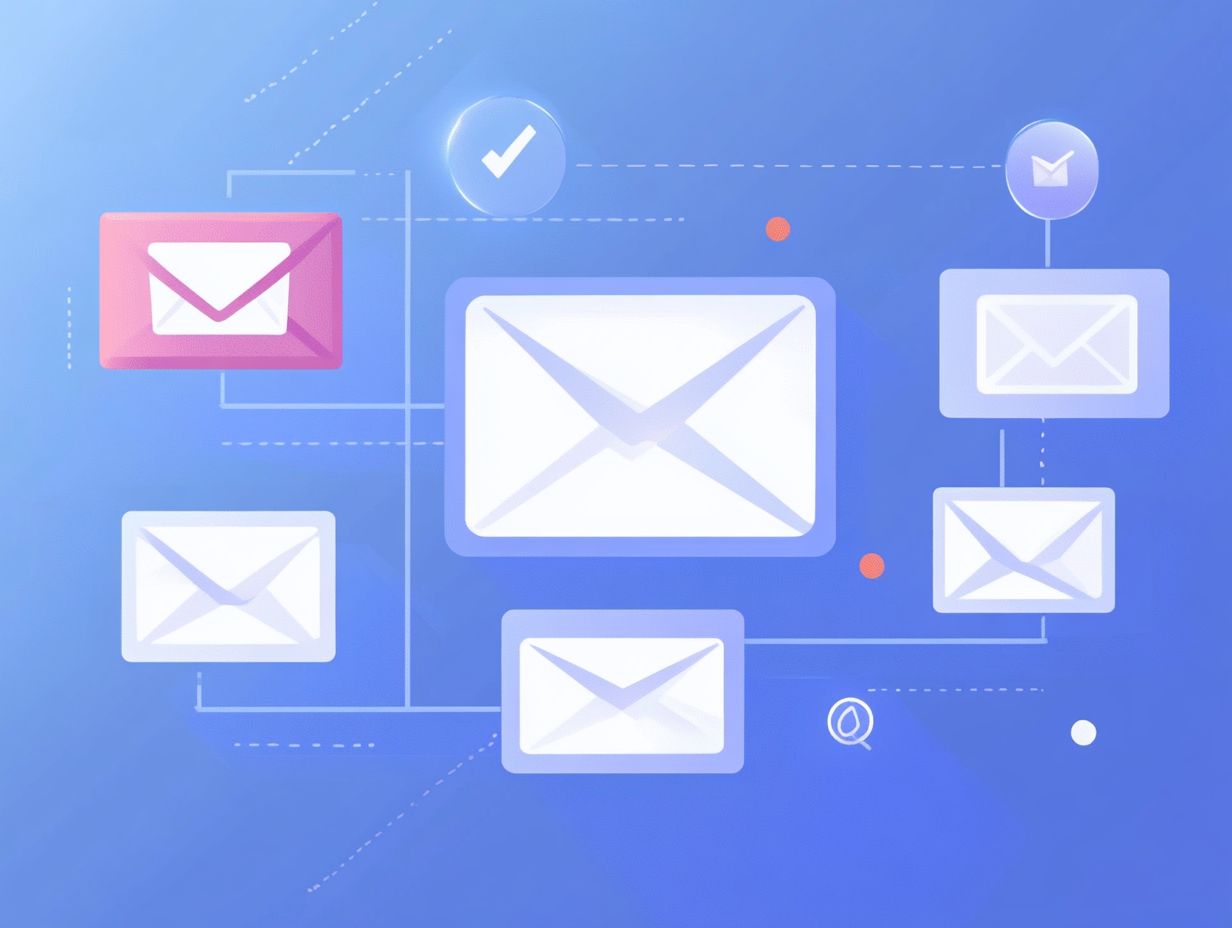
Key elements of email personalization involve understanding your audience, tailoring content to align with their preferences, and incorporating relevant call-to-actions (CTAs). These elements are game-changers for customer loyalty and engagement.
To genuinely connect with your recipients, it s essential to leverage dynamic content that adapts based on individual user behavior and preferences. For instance, using tailored recommendations can significantly boost conversion rates, making your offers feel more relevant and enticing.
Many companies stumble by adopting a one-size-fits-all strategy, neglecting to segment their lists properly or relying too heavily on generic templates. To elevate personalization, you can sidestep these pitfalls by investing in data analysis methods. This ensures you gather valuable insights into customer interactions and preferences, allowing for campaigns finely tuned to resonate with users’ specific interests.
How Can Tracking and Testing Improve Email Marketing Results?
Utilizing tracking and A/B testing, which means comparing two versions of an email to see which one performs better, in your email marketing strategy enables you to optimize campaigns, enhance engagement, and sidestep common pitfalls linked to using spammy words that could derail performance.
By closely monitoring key email performance metrics such as open rates, click-through rates, and conversion rates you can gain invaluable insights into what truly resonates with your audience. Tools like Mailchimp and HubSpot come equipped with built-in analytics, streamlining this process and allowing you to refine your strategies iteratively.
For example, you might conduct A/B testing on subject lines, experimenting with variations like “Unlock Your Exclusive Offer” versus the straightforward “Special Sale Today.” The data you gather will reveal which approach generates higher engagement, giving you the ability to craft more compelling content.
These insights will lead to more effective campaigns, increased customer retention, and improved ROI while ensuring compliance with GDPR (General Data Protection Regulation, laws that protect personal data).
Start segmenting your list today!
Try A/B testing now to see immediate improvements!
What Are the Common Mistakes Businesses Make When Using Email Marketing?
Common mistakes in email marketing can hinder your success. Neglecting audience segmentation, using spammy words, and failing to track your campaigns effectively can alienate your subscribers and ultimately undermine your efforts.
These oversights can result in decreased open rates, increased unsubscribes, and a notable decline in customer loyalty. Without proper segmentation, your messages might miss the mark, failing to resonate with the audience you aim to engage. Overly promotional or misleading language can trigger spam filters, preventing your communications from ever reaching inboxes.
To combat these pitfalls, it s essential to refine your strategies. Actively segment your lists, adopt clearer and more authentic messaging, and leverage analytics tools which help you understand how well your emails are performing to monitor campaign performance. By taking these proactive steps, you can significantly enhance engagement and retention rates.
Let's Set Up Your Lead Generation Strategy
Fill out the form below, and our team will get in touch with you to create a tailored solution for your business.
How Can Businesses Avoid These Mistakes and Improve Their Email Marketing Strategies?
Businesses can sidestep common pitfalls in email marketing by embracing effective audience segmentation, leveraging email automation, and consistently monitoring campaign performance metrics, including Sender Score, a score that measures your email sending reputation.
To begin, analyze your customer data to identify distinct groups based on behavior, interests, and demographics. This insight allows you to craft messages that resonate more profoundly with your audience.
Utilizing email automation tools helps streamline the process of sending targeted campaigns at optimal times, thus maximizing engagement opportunities.
By tracking key performance indicators such as open rates, click-through rates, and conversions, you empower yourself to continuously refine your strategies. Adopting a learning mindset fosters adaptation and growth, ensuring your future campaigns achieve even greater success.
Frequently Asked Questions
What are the top 5 common email marketing mistakes to avoid?
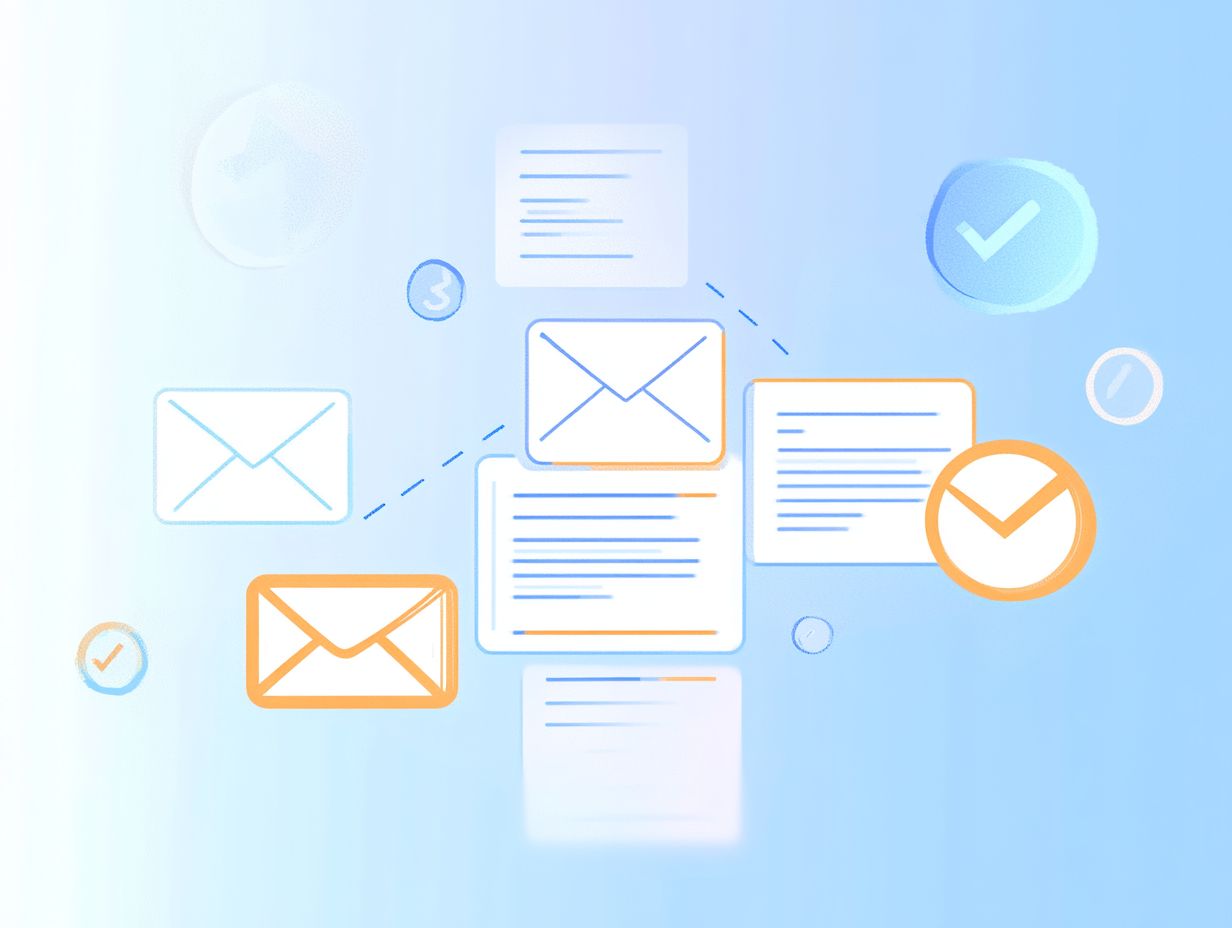
The top 5 common email marketing mistakes to avoid are: sending too many emails, not segmenting your audience, not personalizing emails, not optimizing for mobile devices, and not tracking and analyzing data through effective tracking campaigns.
How does sending too many emails affect my email marketing strategy?
Sending too many emails can lead to subscriber fatigue and increased unsubscribe rates. It can also make your emails seem irrelevant or annoying, causing recipients to ignore them or mark them as spam.
Why is segmenting my audience important for successful email marketing?
Segmenting your audience allows you to send targeted and relevant messages to specific groups of subscribers. This can lead to higher open and click-through rates, as well as increased engagement and conversions.
What are the benefits of personalizing emails?
Personalizing emails can make your subscribers feel valued and increase the chances of them engaging with your content. It can also lead to higher conversion rates and build a stronger connection with your audience.
How important is it to optimize emails for mobile devices?
Optimizing your emails for mobile is a must! Most people check their emails on their phones, so if your emails are not optimized, you risk losing potential customers and damaging your brand’s reputation.
Why is tracking and analyzing data essential for email marketing success?
Tracking and analyzing data allows you to understand what is working and what is not in your email marketing campaigns. It can help you make informed decisions and improve your strategies for better results and ROI.
Start refining your email marketing today and watch your engagement soar!






